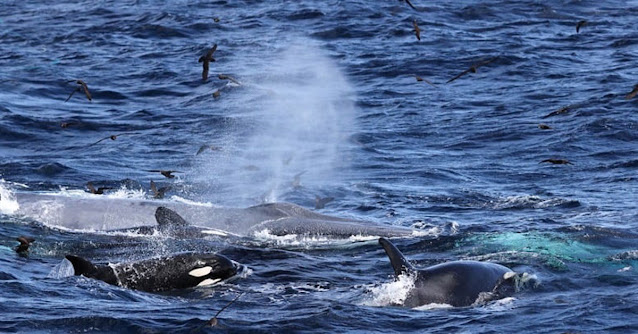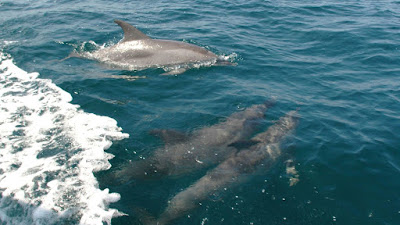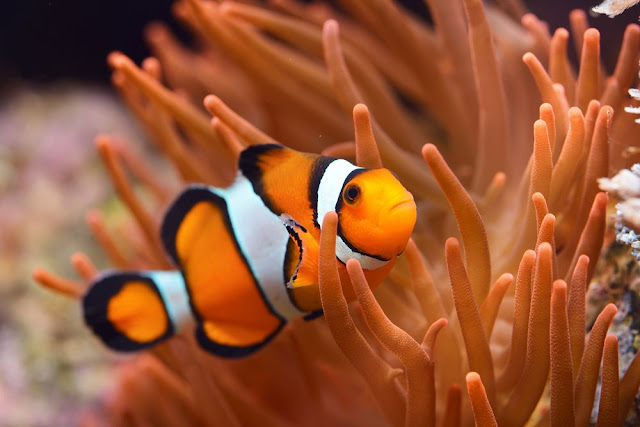Scientists Confirms the Orcas Kill the blue Whale For the First Time
Killer whales don't hesitate to hunt from herring to great white sharks. For the first time, gory footage reveals that orca pods can even bring down an adult blue whale.
While past reports reveal that they were attempted attacks on blue whales, no one has observed orcas complete the job until March 19th, 2019. The series of events has been taken off on the southwestern coast of Australia from 2019 to 2021. The three separate attacks were described in the journal Marine Mammal Science.
“This is the biggest predation event on the planet,” says study coauthor Robert Pitman, a cetacean ecologist to Science News’s Anna Gibbs. “We haven’t seen things like this since dinosaurs were here, and probably not even then.”
In each attack, the orcas—also called killer whales—relied on strength in numbers. Between 50 and 75 orcas took part in each hunt, and more than a dozen of the same individuals were involved in all three events. The orcas employed different tactics to take down the whales, including launching onto the animal's blowhole, raking them with their teeth, and on one notably brutal occasion, gnawing on a live whale's tongue.
"These killer whales, they work together a lot and there are a lot of killer whales," Pitman tells Live Science. "That's probably the reason for their success down there."
At around 150 tons, blue whales are the largest animals to ever live on Earth. Their tongue alone weighs as much as an elephant, and they have golf cart–size hearts. Adult blue whales are commonly between 70 and 80 feet long, but some reach up to 110 feet—the length of three school buses. Orcas are dwarfed in comparison, at around 30 feet long and an average of six tons.
It was “a really ominous, bad weather day” off the Western Australia coast, says John Totterdell, a biologist at Cetacean Research Centre in Esperance, Australia. Totterdell and his colleagues, who recount their whale tale January 21 in Marine Mammal Science, were still an hour out from their usual orca-observing site when they slowed to remove some debris from the water. In the pouring rain, they almost missed the splashing — and the telltale dorsal fins of killer whales.
“Within seconds, we realized they were attacking something big. Then we realized, oh my, it was a blue whale,” says Totterdell.
The team had stumbled upon a dozen orcas assailing an adult blue whale (Balaenoptera musculus), estimated at between 18 and 22 meters long. Tooth marks crisscrossed its flank, and its dorsal fin was mostly bitten off. The most brutal injury was on its face: The flesh of the whale’s snout was ripped away along the top lip, exposing bone. Three orcas slammed into the whale’s side like a battering ram, as another orca began feeding on its tongue. The blue whale finally died about an hour after the research team arrived.
The second attack happened less than a month later and was just 15 miles from the first site. This time, the orcas chose a smaller blue whale, perhaps a juvenile, roughly twice their length. The third attack happened two years later in March 2021, when orcas charged a 46-foot-long whale.
In each case, the pod of orcas would unleash a coordinated attack that included grabbing onto the whale’s fins, flippers, and tail to slow it down. After that, the orcas jumped onto the whale's blowhole to exhaust the animal and prevent it from breathing. All three events happened along the continental shelf drop-off where migrating blue whales pass by a huge population of orcas.
One reason that no one has ever seen orcas feeding on a blue whale may be because blue whales are still rare. The species was pushed to the edge of extinction by commercial whaling in the 1900s, and they are classified as endangered by International Union for Conservation of Nature. Now that blue whale numbers are increasing, so could the instances of attacks on the species, Rachael Lallensack reported for Smithsonian in 2018.
"Maybe we're finally getting to see a little bit of what the world looked like before we eliminated most of the large animals that swim in the sea," Pitman tells Live Science.




Comments